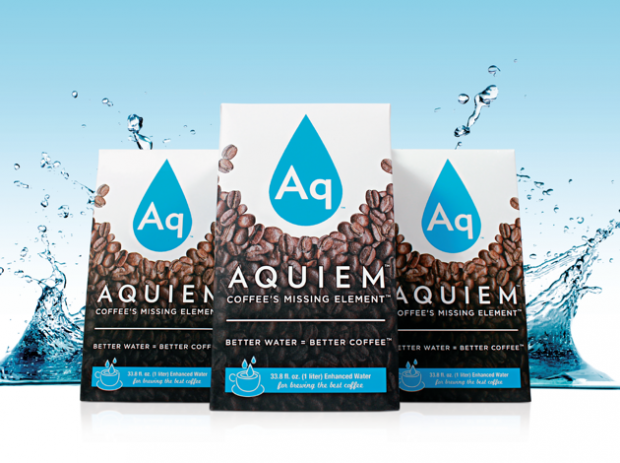Most coffee professionals recognize that water quality plays a huge role in the quality of the coffee they serve, as well as in the longevity and maintenance costs of brewing equipment. For this reason, no matter how clean and tasty an area’s public tap water may be, responsible water filtration is still considered an essential component of any thorough coffee shop build-out.
Home baristas, meanwhile, aren’t typically as careful, which results in a wide berth of consumer experience from region to region for any given roasted coffee product.
Traveling professionals, too, are often left to the mercy of public or bottled water wherever they happen to be. Yet whether water is tap, bottled or filtered, it still may include either too much or too little of the minerals and chemicals that contribute to ideal extraction and flavor.
It’s a tough nut to crack, and though the precise chemistry of the water used for brewing is an area of geekdom usually only occupied by the most scientifically predisposed of aficionados, a new packaged water product called Aquiem seeks to help coffee-lovers skip the academics on their way to the perfect cup. Aquiem is water specifically formulated for coffee — water that has been purified to zero mineral content, then combined with a precise and purportedly ideal recipe of minerals and other components.
“You could probably refer to it as ‘distilled’ because at that point in time, we’ve pulled out just about everything, and then we add back a blend of essential minerals that specifically enhance the flavor, the aroma and the consistency of the coffee,” Aquiem co-founder Rob Vidacovich told Daily Coffee News.
Vidacovich attributes the birth of the Aquiem concept to groundwater engineer Frank Manale, currently COO of Toxicological & Environmental Associates, Inc., a consulting firm specializing in risk-based soil and groundwater remediation systems. Said Vidacovich, “He kept reading all these articles about how coffee is made up of 98-percent water, and how important of a role the correct chemistry of the water played.”
By Manale’s suggestion and initially with his help, research and development began six years ago also with the participation of Ralph Henn, who spent 14 years with Baton Rouge, La.-based Community Coffee Company, eventually becoming senior vice president of sales.
It was in January of this year that the product Aquiem was officially launched by the Louisiana-based company that is now helmed by Vidacovich, Manale’s wife Jerri Manale and Mitzi Barber. The product, said Vidacovich, is a superior coffee-brewing ingredient not only for what it contains but also for what it does not.
“What you definitely do not want is to have things like zinc and lead, fluoride, chlorine and large amounts of calcium in the water. All of that effects the taste of the coffee,” said Vidacovich. “What does have a favorable effect on coffee are things like magnesium, potassium, and a certain right blend of calcium.”
Vidacovich added that Aquiem is also formulated to account for the acidity and total dissolved solids (TDS) of the water. “Experts will tell you that probably the best point for total dissolved solids in the water would be right around 150,” he said, adding, “pH would be somewhere very, very close to a neutral 7.”
Without delving too far into the proprietary particulars of the product, Vidacovich freely admitted that among the hundreds of articles and studies on which their formula is largely based, many of the most influential are as accessible to the public as they are to them.
Vidacovich said that while he is familiar with the work of Christopher Hendon and Maxwell Colonna-Dashwood and their book Water for Coffee: Science Story Manual, published last year, it was not a reference point in the development of Aquiem, which occurred largely before that book came out. He did however cite the online forum Home-Barista.com as one informative source, as well as the Specialty Coffee Association of America Water Standards handbook, various National Coffee Association and SCAA articles on water quality and composition and Jim Schulman’s Insanely Long Water FAQ, among others.
Research was conducted in laboratories at Louisiana State University, and production now occurs at a facility in Miami, Fla. that’s able to work with the specific Tetrapak containers Aquiem chose for optimal storage and delivery. Today, Aquiem’s one-liter boxes have landed on shelves in about 18 grocery stores, and talks are underway with larger regional chains such as Rouse’s, as well as Whole Foods. The company is considering approaching Amazon for online retail distribution, while also looking forward to developing a single-serve package as well as a larger volume packaging for potential wholesale for use in commercial coffee environments.
“Higher-end coffee drinkers are spending more and more money on high-end coffee beans. They’re spending an enormous amount of money on the equipment to grind it and to brew it, and yet it’s 98 percent water and they don’t have the appropriate chemistry of water to get the value that they’re trying to get,” said Vidacovich. “They’re definitely not getting the best cup of coffee that they can possibly get.”
Howard Bryman
Howard Bryman is the associate editor of Daily Coffee News by Roast Magazine. He is based in Portland, Oregon.
Comment
3 Comments
Comments are closed.







That’s it. I quit. You people are crazy.
I tried Aquiem a few months back after running into the founders at an in store demo at my local grocery store.
It was terrible, far worse than the filtered water I normally use.
I use a technivorm moccamaster & home roast. I wouldn’t recommend the product to anyone who enjoys coffee.
Consistency ist Key (in all Parts of the chain). And Extraction is key, no doubt. But tww?Really? From a ecological point of view? Decadent, Not acceptable! Unless you deliver by bicycle.